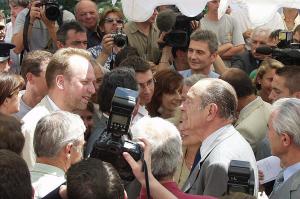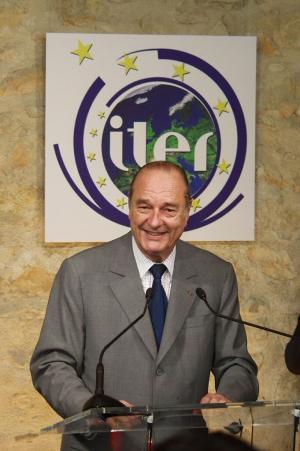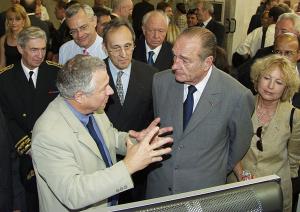28 June 2005: President Chirac's "day after tomorrow"
2 Jul 2010
-
Sabina Griffith
On Tuesday, 28 June 2005, Akko Maas embarked for a two-day adventure that turned out to be "both a nightmare and a dream."
In the early afternoon of Tuesday, 28 June 2005, Akko Maas was sitting in his office on the CEA site in Cadarache closely following the news coming in from Moscow. Two hours prior, the decision had been made at a ministerial meeting that ITER would be built in Cadarache. That was good news indeed for Akko—a member of the core team in charge of the ITER site studies and the follow-up of all administrative matters.
Since late 2000 the team had been working hard to have ITER sited in Europe. In 2001, at the beginning of negotiations on the implementation of the ITER Project and its location, four sites had been proposed: Clarington, Canada; Rokkasho, Japan; Vandellós, Spain; and Cadarache, France.
Five years later, hard work and tough negotiation had finally paid off ... ITER was coming to Cadarache. Just as Akko was about to relax, the telephone on his desk rang. On the other end of the line was the Office the Director of the CEA Cadarache, Pascale Amenc-Antoni. Three words later, and all thoughts of relaxation had come to a sudden end for Akko. "Chirac is coming!" and "Elysée wants us to invite all the CEA staff."
3,000 people was a lot to deal with ... especially in a day and a half. President Chirac's arrival was announced for "the day after tomorrow." Only 36 hours for Akko and the rest of the site support team to organize a logistical miracle.
By the following morning, buses to transport the staff to the Cadarache Château were organized, tents had been put up, and the carpets rolled out ... not just any carpets, of course, but the official carpets that always accompany a French president, as well the official flags and the official speaker's desk. No one was allowed to walk over the carpet with shoes, and so Akko—the test person for the camera crews—was in stocking feet many times that day.
Extreme challenges require extreme measures ...
Air conditioning systems were installed "which indeed cooled down the room temperature," says Akko, "but they made so much noise than when the President started to speak they had to be turned off," leaving both the speaker and the audience defenseless against the heat.
Explanations on fusion physics were provided by Michel Chatelier, then Head of CEA Fusion Research Department. Familiar faces listened in: Christian Frémont, former regional Prefect; Bernard Bigot, then High Commissoner to Atomic Energy; and Pascale Amenc-Antoni, then Director of CEA Cadarache ...
At 7:00 p.m. the night before the event, it was decided to organize vapour fans for the audience waiting outdoors. "But our service company had none in stock!" says Akko. A company in Brussels had 25 fans available, and they were able to send them overnight. Also, 2,000 bottles of cooled champagne arrived right on time the next morning. "That was impressive, amazing," recalls Akko.
Despite the passage of time, many scenes from the day are still fresh in Akko's mind: the President's helicopter landing behind the Château; the traffic jams around the CEA centre and the access roads; the nervous looks on the faces of the security personal as the President dove into the crowds and shook as many hands as possible; and also the vacuum that remained behind as the booming sound of the chopper's rotors finally faded away. "That event was exceptional in many ways," Akko recalls. "It was both a nightmare and a dream."




